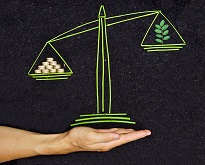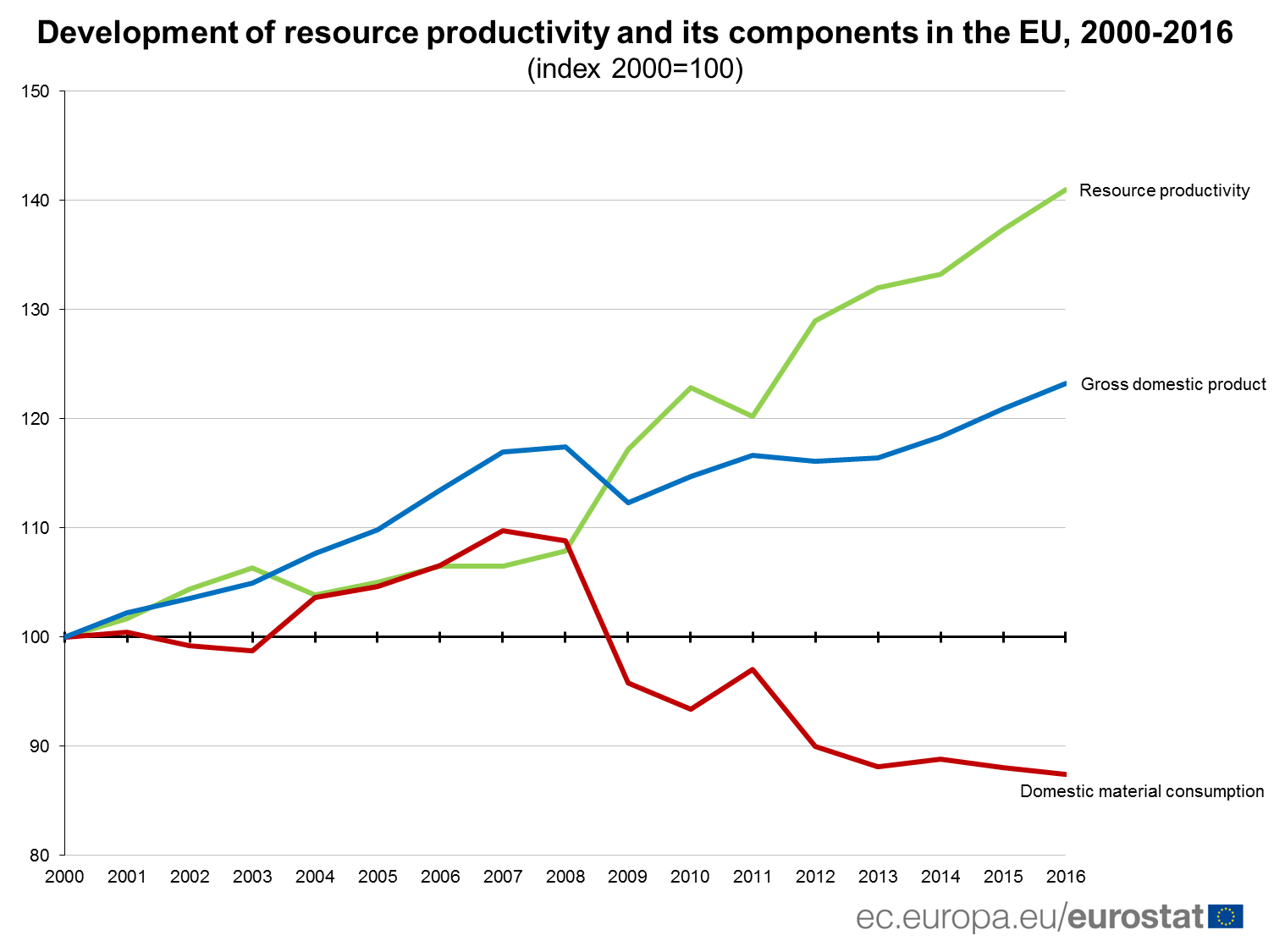Maintaining economic growth while decreasing material consumption
In the European Union (EU), resource productivity increased to 2.07 €/kg in 2016 from 1.47 €/kg in 2000, an increase of 41% in real terms. Resource productivity measures how efficiently natural resources are used by the economy and indicates whether economic growth is compatible with a more efficient use of natural resources from the environment. Since 2008, resource productivity has progressed in the EU with both increasing economic activity, as measured by GDP, and a reduced extraction of materials, as measured by domestic material consumption (DMC). In the previous period between 2000 and 2008, GDP and domestic material consumption grew in parallel in the EU, leading to relatively constant resource productivity.
Resource productivity highest in Italy and the Netherlands
The level of resource productivity varies widely between the EU Member States. It depends on a country's natural resources, the diversity of its industrial activities, the role played by its services sector and its construction activities, the scale and patterns of its consumption and its various energy sources. Across Member States, the highest resource productivity in 2016 was recorded in Italy (3.98 €/kg) and the Netherlands (3.96 €/kg), ahead of Luxembourg (3.65 €/kg), the United Kingdom (3.59 €/kg) and Spain (3.17 €/kg). At the opposite end of the scale, five Member States registered resource productivity lower than 1 €/kg: Bulgaria (0.68 €/kg), Romania (0.70 €/kg), Latvia (0.82 €/kg), Estonia (0.85 €/kg) and Finland (0.95 €/kg).
The amount of resources used by an economy plays a crucial role in the generation of environmental pressures, from the extraction of natural resources for production and consumption activities to materials released into the environment, such as the disposal of waste and emissions into the air and water. At the heart of the Jobs, Growth and Investment priority of the European Commission is a move towards a circular economy.
For more information
Eurostat website section dedicated to material flows and resource productivity.
Eurostat metadata on material flow accounts.
Eurostat Statistics Explained articles on material flow accounts and resource productivity, resource productivity statistics and physical imports and exports.



